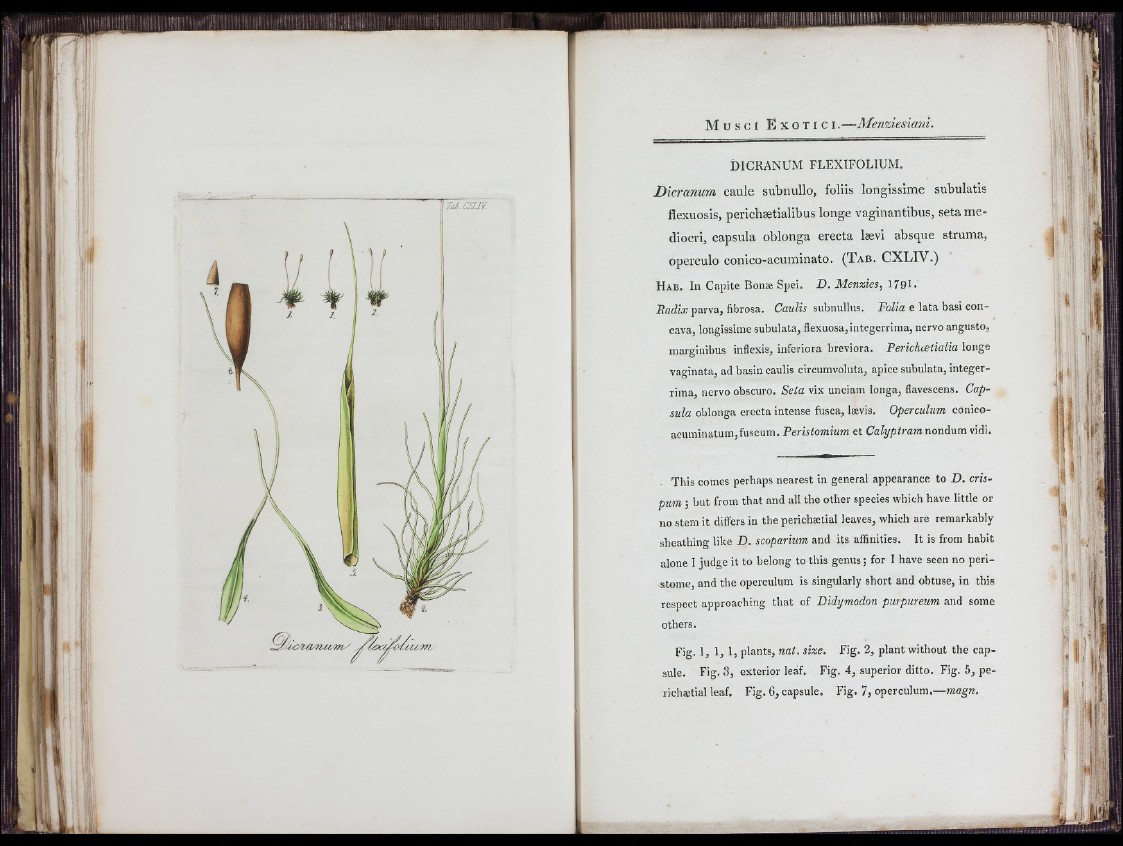
1
i
. 1
, ! i
;
DICRANUM FLEXIFOLIUM.
D ic r a n u m caule su b n u llo , foliis lo n g issim e su b u la tis
ñex u o sis, p e ric hæ tia lib u s lo n g e v a g in a n tib u s , se ta m e d
io c ri, c ap su la o b lo n g a e re c ta lævi ab sq u e strum a ,
o p e rcu lo co n ic o -a c um in a to . (T a b . C X L IV .)
H ab. In Capite Bonæ Spei. D. Menzies, 1791.
Radix parva, fibrosa. CauUs subnullns. Folia e lata basi concava,
longissime subulata, flexuosa,integerrima, nervo angusto,
marginibus inflexis, inferiora breviora. Perichtetialia longe
vaginata, ad basin caulis circumvoluta, apice subulata, integerrima,
nervo obscuro. Seta vix unciam longa, flavescens. Capsula
oblonga erecta intense fusca, lævis. Operculum conico-
acuminatum,fuscum. Peristomium et Calyptram nonàwm vidi.
This comes perhaps nearest in general appearance to D . cris-
p im ; but from that and all the other species which have little or
no stem it differs in the perichætial leaves, which are remarkably
sheathing like D. scoparium and its affinities. It is from habit
alone I judge it to belong to this genus; for I have seen no peristome,
and the operculum is singularly short and obtuse, in this
respect approaching that of Didymodon purpureum and some
others.
Fig. 1, 1, 1, plants, nat. size. Fig. 2, plant without the cap-
■sule. Fig. 3, exterior leaf. Fig. 4, superior ditto. Fig. 5, perichaetial
leaf. Fig. 6, capsule. Fig. 7, operculum.—iwogn.
t :
ÍIJ
r , m u §